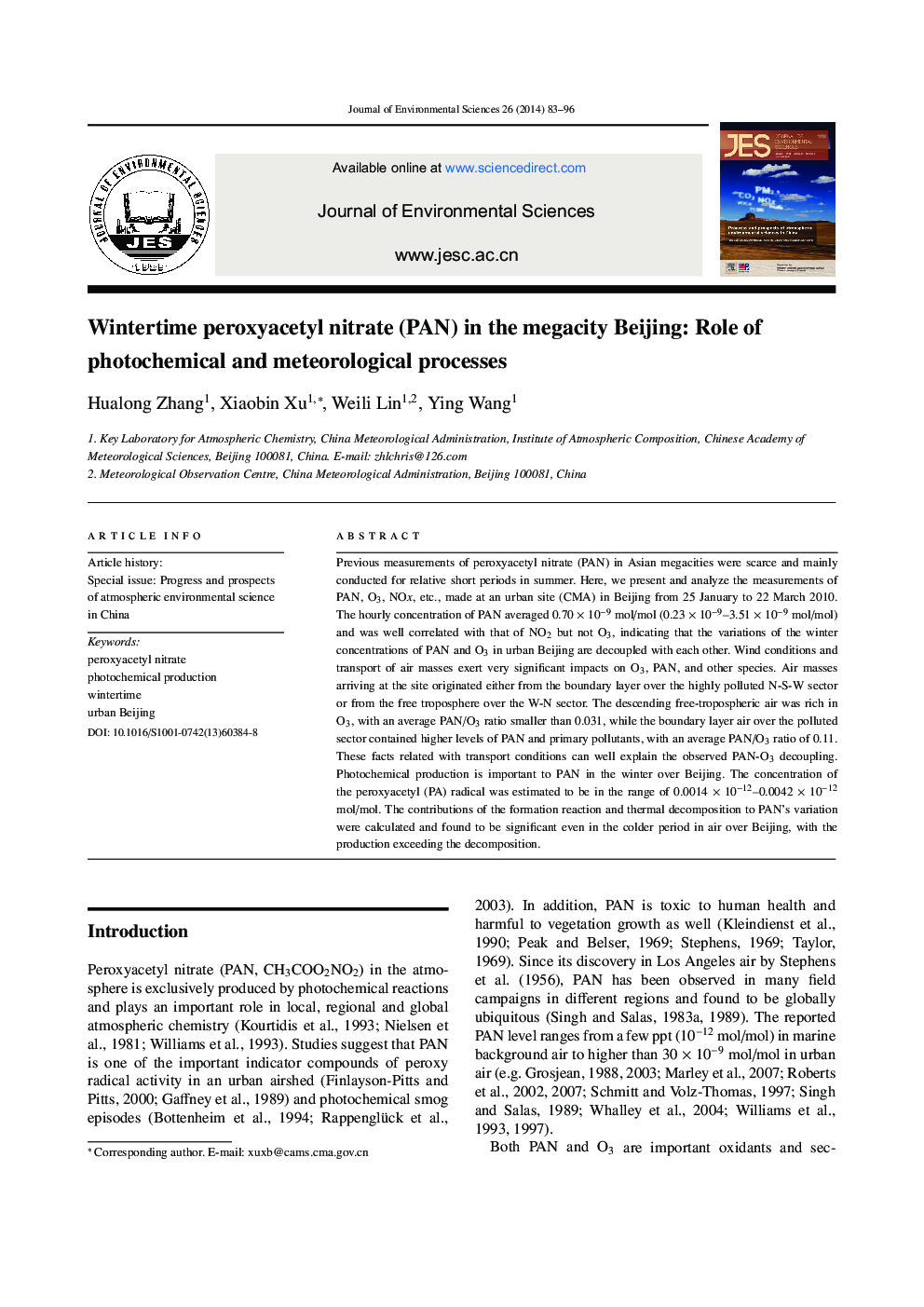| کد مقاله | کد نشریه | سال انتشار | مقاله انگلیسی | نسخه تمام متن |
|---|---|---|---|---|
| 4454791 | 1312494 | 2014 | 14 صفحه PDF | دانلود رایگان |

Previous measurements of peroxyacetyl nitrate (PAN) in Asian megacities were scarce and mainly conducted for relative short periods in summer. Here, we present and analyze the measurements of PAN, O3, NOx, etc., made at an urban site (CMA) in Beijing from 25 January to 22 March 2010. The hourly concentration of PAN averaged 0.70 × 10−9 mol/mol (0.23 × 10−9–3.51 × 10−9 mol/mol) and was well correlated with that of NO2 but not O3, indicating that the variations of the winter concentrations of PAN and O3 in urban Beijing are decoupled with each other. Wind conditions and transport of air masses exert very significant impacts on O3, PAN, and other species. Air masses arriving at the site originated either from the boundary layer over the highly polluted N-S-W sector or from the free troposphere over the W-N sector. The descending free-tropospheric air was rich in O3, with an average PAN/O3 ratio smaller than 0.031, while the boundary layer air over the polluted sector contained higher levels of PAN and primary pollutants, with an average PAN/O3 ratio of 0.11. These facts related with transport conditions can well explain the observed PAN-O3 decoupling. Photochemical production is important to PAN in the winter over Beijing. The concentration of the peroxyacetyl (PA) radical was estimated to be in the range of 0.0014 × 10−12–0.0042 × 10−12 mol/mol. The contributions of the formation reaction and thermal decomposition to PAN's variation were calculated and found to be significant even in the colder period in air over Beijing, with the production exceeding the decomposition.
Journal: Journal of Environmental Sciences - Volume 26, Issue 1, 1 January 2014, Pages 83-96